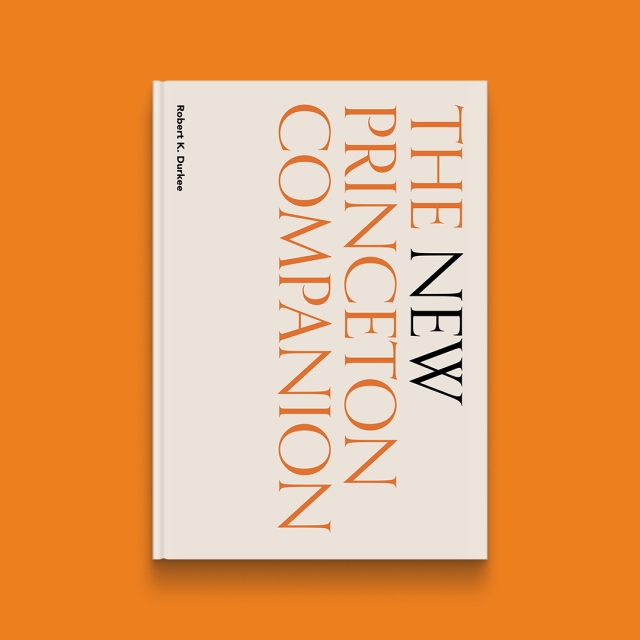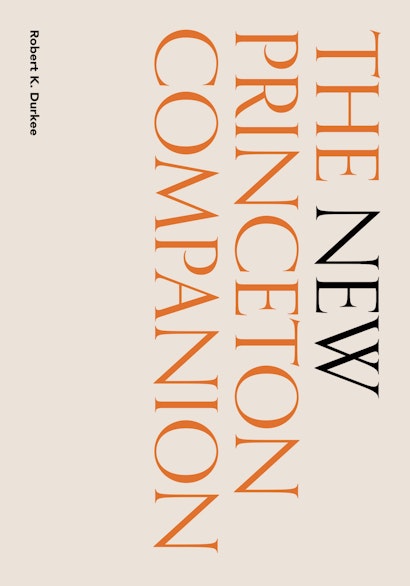The New Princeton Companion, edited by Robert K. Durkee, former vice president and secretary of Princeton University, is both a compendium and a chronicle of one of America’s finest institutions of higher learning. A successor to the first Companion, the NPC builds on a vast array of entries, from clubs, societies, sports, academic departments, university buildings, and student pranks to distinguished Princetonians, the university’s role in the US, its presence around the world, on film, and even in space. As with all institutions, Princeton has evolved in countless ways, a 250-year process which this revamped edition captures in its fullness. I spoke to Robert Durkee about the book.
You edited the first Princeton Companion in 1978. What, if anything, surprised you in editing this edition?
RD: I contributed one of the entries to the 1978 edition (on the Council of the Princeton University Community) and I helped the author/editor, Alexander Leitch, identify potential student fact-checkers, but those were the only roles I played, other than being a regular user of the Companion over many years. Recently I was told by Leitch’s final editor, Gail Ullman, that the compilation of that edition took place over more than five years. This edition was compiled in just over two years, despite the University Archives being closed for much of that time for renovation and Firestone Library being closed because of COVID.
The first challenge in preparing this edition was deciding which entries to retain from the 1978 book, which to remove, which to reorganize and combine, and which new entries to add. In the end, we retained 289 of the more than 400 entries in the first Companion, and we added 115 new ones. Some of the removed entries covered people, traditions, and events that have not stood the test of time—they don’t seem as significant or relevant as they did 50 years ago (although in a few cases I wasn’t entirely sure how they made the cut even then). Some of the entries were removed when we decided to limit the inclusion of alumni (with very few exceptions) to those who played significant roles in the founding of the country or shaping the nature of the University.
All the carryover entries were modified in some way: many had to be updated and many had to be modified to reflect new discoveries and understandings about Princeton’s history. Many of the new entries describe new departments, programs, teams, buildings, and initiatives from the past 50 years, while others depict individuals who have had a particularly significant impact over these five decades. Other new entries respond to the call by the University’s trustees to be more honest and transparent about aspects of the University that have often been “forgotten, overlooked, subordinated, or suppressed.” These include entries focused on women and people of color; entries that draw on the findings of the Princeton and Slavery Project; and entries on the diversification of campus art, iconography, and portraiture.
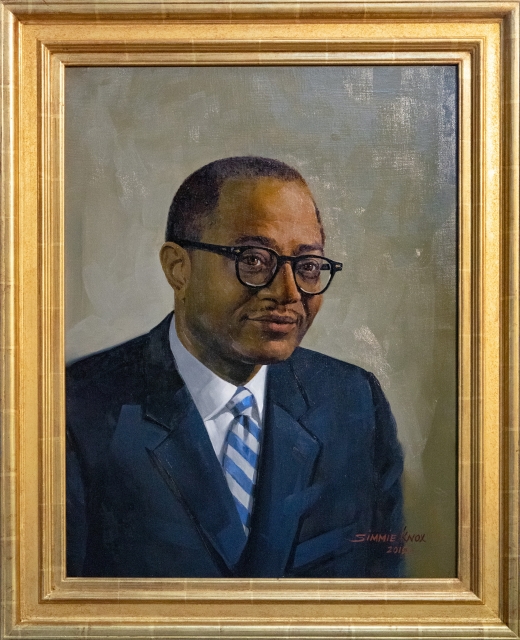
The 1978 edition had several entries that were essentially reference lists: members of faculty honor societies, Princeton presidents and deans, Olympic medal winners, founders of other colleges and universities, and governors, cabinet officers, and members of Congress. These lists have all been updated, and many more were added when I realized just how difficult it is to find much of this information. Some of the new lists are included among the 404 entries, but there is also a new section with another dozen lists, ranging from Baccalaureate speakers and honorary degree recipients to valedictorians, salutatorians, and winners of Behrman Awards, Pyne Prizes, Jacobus Fellowships, the James Madison Medal, and the Woodrow Wilson Award.
The book chronicles how a great institution adapts. In your opinion, how does The New Princeton Companion chart Princeton’s evolution? What new challenges will it face in the 21st century?
RD: The book charts Princeton’s evolution in two ways. In a feature new to this edition, the book begins with three thematic essays that (1) trace the University’s evolution from its founding in 1746 into the 21st century, with a particular emphasis on decisive turning points along the way; (2) illustrate the evolution of the physical campus through words and maps; and (3) describe the derivation, evolution, and manifestations of the University’s informal motto—Princeton in the Nation’s Service and the Service of Humanity. The entries go into much greater depth about key individuals, events, decisions, and consequences. While the 404 entries cover a wide range of topics, many of them cluster in two areas: (1) the evolution of the University’s academic mission, with entries on every academic department and a number of centers, institutes, and academic initiatives, and on such vital academic resources as the library and the art museum; and (2) the evolution of the residential experience, with entries on residential and religious life, athletics (including all the varsity teams), and student organizations and activities of various kinds (including protest activity).
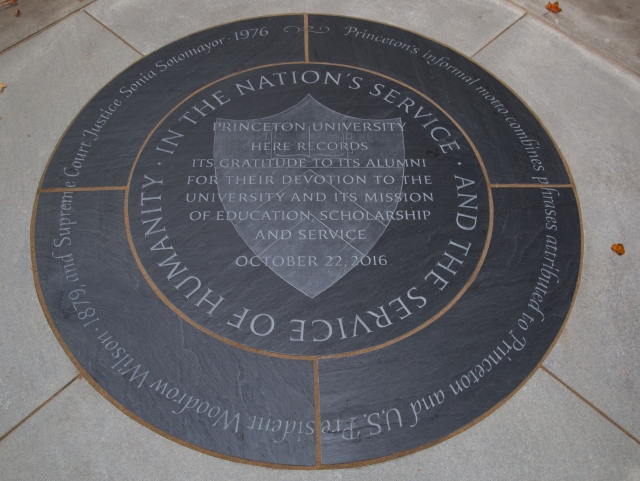
The opening essay ends with a look at Princeton in the 21st century, culminating with a quick peek at what the 300-year-old University might look like in 2046. The past 50 years have witnessed ongoing efforts to institutionalize and embellish decisions in the mid-20th century to become much more diverse and inclusive, much more multicultural, and much more international in scope. These efforts are likely to continue, perhaps with redoubled efforts in some areas. (While the University has succeeded in increasing the percentage of lower income Pell Grant recipients in its undergraduate classes from single digits to more than 20 percent, the percentage of its undergraduate classes on financial aid remains plateaued at around 60 percent, which means that some 40 percent of its undergraduates still come from families with incomes above $300,000.)
With the introduction of coeducation, the 1970s saw a substantial increase in the number of undergraduates, and additional 10 percent increases have been approved in each of the first two decades of the 21st century, while the sizes of the graduate school, the faculty, and the staff also have increased significantly. The construction of two residential colleges, rather than one, to accommodate the second enrollment of an additional 500 undergraduates, provides capacity for further growth over time, as does the decision to construct additional graduate student housing on the new Lake Campus. In a significant departure from past practice, the University also has announced plans to consider a new online credit- or degree-granting program for students not in residence.
One major challenge of the 21st century will involve developing the Lake Campus to achieve the goals articulated in the University’s most recent campus plan and successfully integrate it into the rest of the campus.
Apart from the challenges of enhancing diversity and inclusivity, accommodating growth, and developing the Lake Campus, the University faces at least three other daunting 21st century challenges: keeping pace with the ever-expanding world of knowledge, as new academic fields are created and old ones are transformed; keeping pace with and making effective use of new technologies; and coping with the long-term impact of both climate change and COVID-19 and potentially other future pandemics.
The new edition cites the University’s “failure to acknowledge the pain and sense of exclusion that many people of color have experienced, and in some cases, continue to experience…partly because of the narrow lens through which the University presents its history.” In what ways does the NPC attempt to redress these inequities and acts of exclusion?
RD: It does this in two ways. First, by expanding the lens when recounting the University’s history, in some cases drawing on the discoveries of initiatives like the Princeton and Slavery Project and the trustees’ review of the legacy of Woodrow Wilson, and in other cases incorporating information long known but suppressed, such as practices in the early decades of the 20th century preventing or limiting the enrollment of Black, Asian, and Jewish students. Many of the entries on the academic departments indicate when and how they began to diversify both their faculties and their academic offerings, as do entries on Admission, Enrollment, and the Graduate School.
Secondly, the NPC includes many new entries that focus on the experiences of people of color, and of women. There are entries on the history of African American, Asian American and Asian, Hispanic/Latinx, Jewish, LGBTQIA, and Native American and Indigenous students at Princeton, and on the Civil War, the Princeton and Slavery Project, the Princeton Prize in Race Relations, Protest Activity, Alumni Affinity Conferences, and the diversification of campus art, iconography, and portraiture. There are also entries on Sir Arthur Lewis, Toni Morrison, Carl Fields and the Fields Center, James Collins Johnson, Michelle Obama, Robert Rivers, Ruth Simmons, Tracy K. Smith, Sonia Sotomayor, Betsey Stockton, Cornel West, and others.

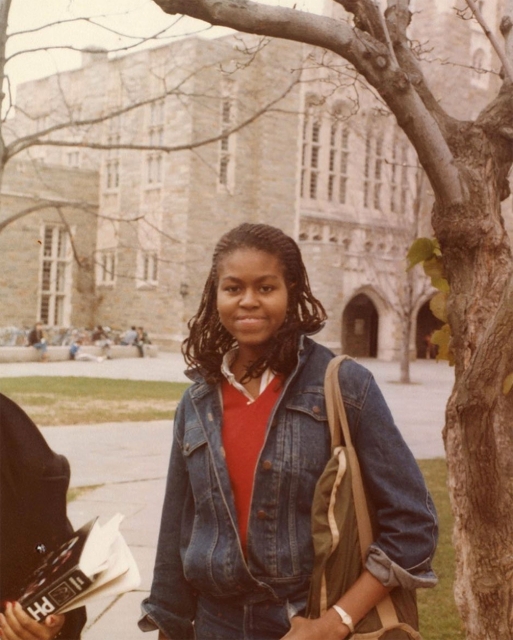
Is the NPC unique, or are there other books like it?
RD: I don’t know of any other book quite like it. Many universities, including Princeton, have published histories: In 1946 Princeton University Press published the then-definitive Princeton: 1746–1896 by the historian Thomas Jefferson Wertenbaker, and in 1996 the University published the journalist Don Oberdorfer 52’s lavishly illustrated Princeton University: The First 250 Years. In 2006, Princeton University Press published historian James Axtell’s The Making of Princeton University: From Woodrow Wilson to the Present, which essentially picked up where Wertenbaker left off.
Do you have a favorite feature of the book?
RD: About midway through the writing of the book, we decided to add an illustrated calendar that cites something that happened in Princeton’s history on all 366 days of the year. The calendar includes developments of great historical significance, but it also includes citations that illustrate how much the University has changed over the years and citations that are just for fun.
I have many favorite entries, but here I’ll note just two. I like the fact that the entry on fundraising points out the transformative role the benefactions of women have played in the history of the University, including those of Susan Dod Brown, who funded Brown and Dod Halls; Harriet Crocker Alexander, who provided the funds to build Alexander Hall; Margaret Olivia Slocum Sage, who funded the construction of Holder Hall and half of Madison Hall; and Josephine Ward Thomson Swann, who made the first gift to support construction of the graduate college. They were followed by Marie Robertson’s gift to support the graduate program of the School of Public and International Affairs; Ethel Stockwell Jadwin’s gift that funded Jadwin Gym, Jadwin Hall, and Fine Hall; and the gifts of Meg Whitman ’77 and Mellody Hobson ’91 for the residential colleges that bear their names.
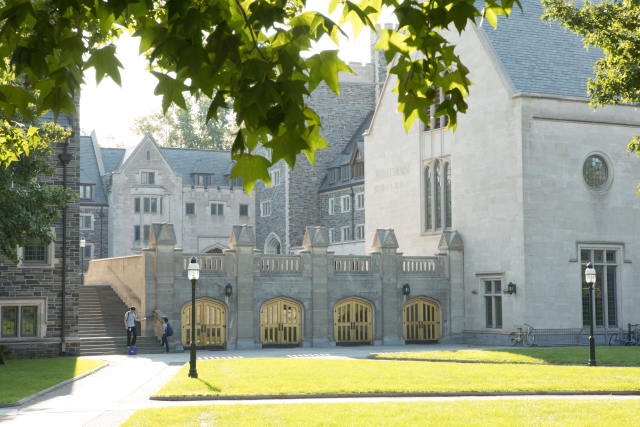
The first Princeton Companion included a brief entry on John F. Kennedy ’39, who spent his freshman year at Princeton living in the subsequently razed Reunion Hall. After the book was published, one of his Princeton classmates sent a handwritten note to Alexander Leitch suggesting an addition to the next edition of the book. That addition appears as follows: After graduating from Harvard, he (Kennedy) told one of his former Princeton classmates, “I will always have a tender spot in my heart for Old Nassau,” and he told another, “At Princeton-Harvard football games, I cheer for Harvard, but I pray for Princeton.”
If you could assemble a dinner party of past Princeton personalities, whom would you invite?
RD: I am extremely fortunate to have known personally almost all the personalities in the book who were on campus during the more than 47 years that I worked in Nassau Hall, so to manage the size of the dinner party I will exclude those I already know from my invitation list, recognizing that in doing so I limit the capacity for diversity around the table. I knew Harold Dodds and worked for his five successors as president; I also worked closely with such other Nassau Hall denizens as Neil Rudenstine ’56, Ruth Simmons, and Fred Fox ’39; with long-time colleague Nancy Malkiel; with my thesis adviser Stan Kelley; and with my friends Carl Fields and Bob Rivers ’53.
While most of the portraits in the Faculty Room of Nassau Hall are of Princeton presidents, there are two portraits of alumni who did not serve in that role, James Madison 1771 and Benjamin Rush 1760—each leaves a remarkable legacy in the country and at Princeton, so I begin with them. (I’m tempted to include Aaron Burr, Jr. 1772 as another attendee from the 18th century, but perhaps that should be a private conversation rather than one around a dinner table.) Let me then add another dozen guests, as follows: from the 19th century, Joseph Henry and James and Isabella McCosh, along with Betsey Stockton, James Collins Johnson, and Pedro Rioseco 1888. From the early 20th century, Beatrix Farrand, Oswald Veblen, Albert Einstein, Alan Turing *38, John Howard ’47 (whom I did get to meet briefly during Princeton’s 250th celebration), and Adlai Stevenson 1922.
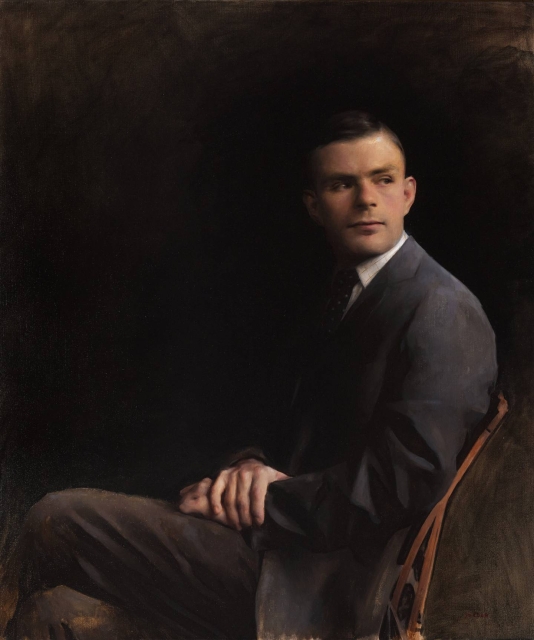
That sounds like a formidable dinner party.
Robert K. Durkee served as Princeton’s vice president for public affairs from 1978 to 2018 and as vice president and secretary from 2004 to 2019. As a Princeton undergraduate during the campus upheavals of the late 1960s, he was an award-winning reporter and editor-in-chief at the Daily Princetonian and a columnist for the Princeton Alumni Weekly.
Christopher Lapinski is the former Art & Design Coordinator for the Creative Media Lab at Princeton University Press. He currently teaches middle school English at Buckingham Friends School in Lahaska, PA.
